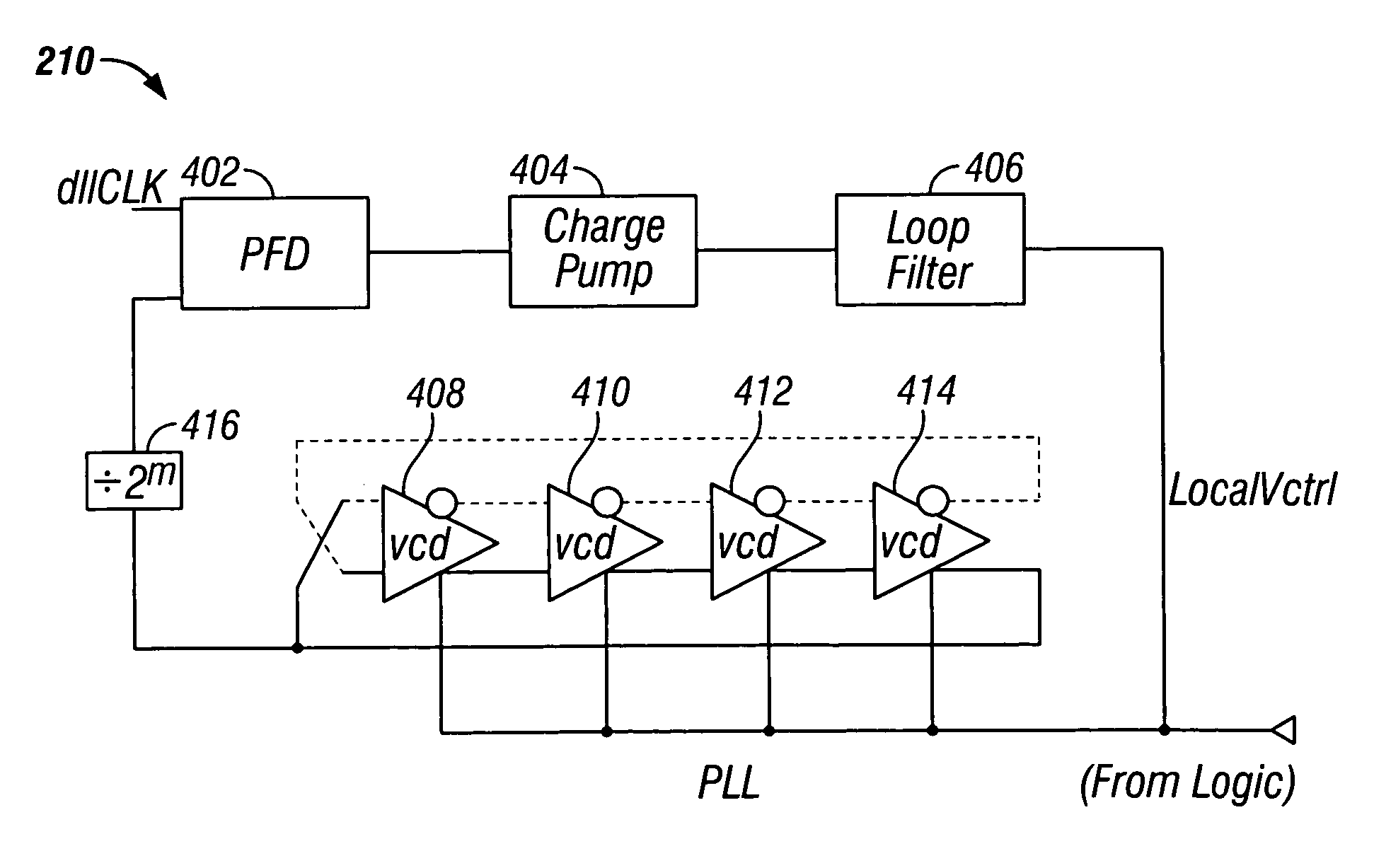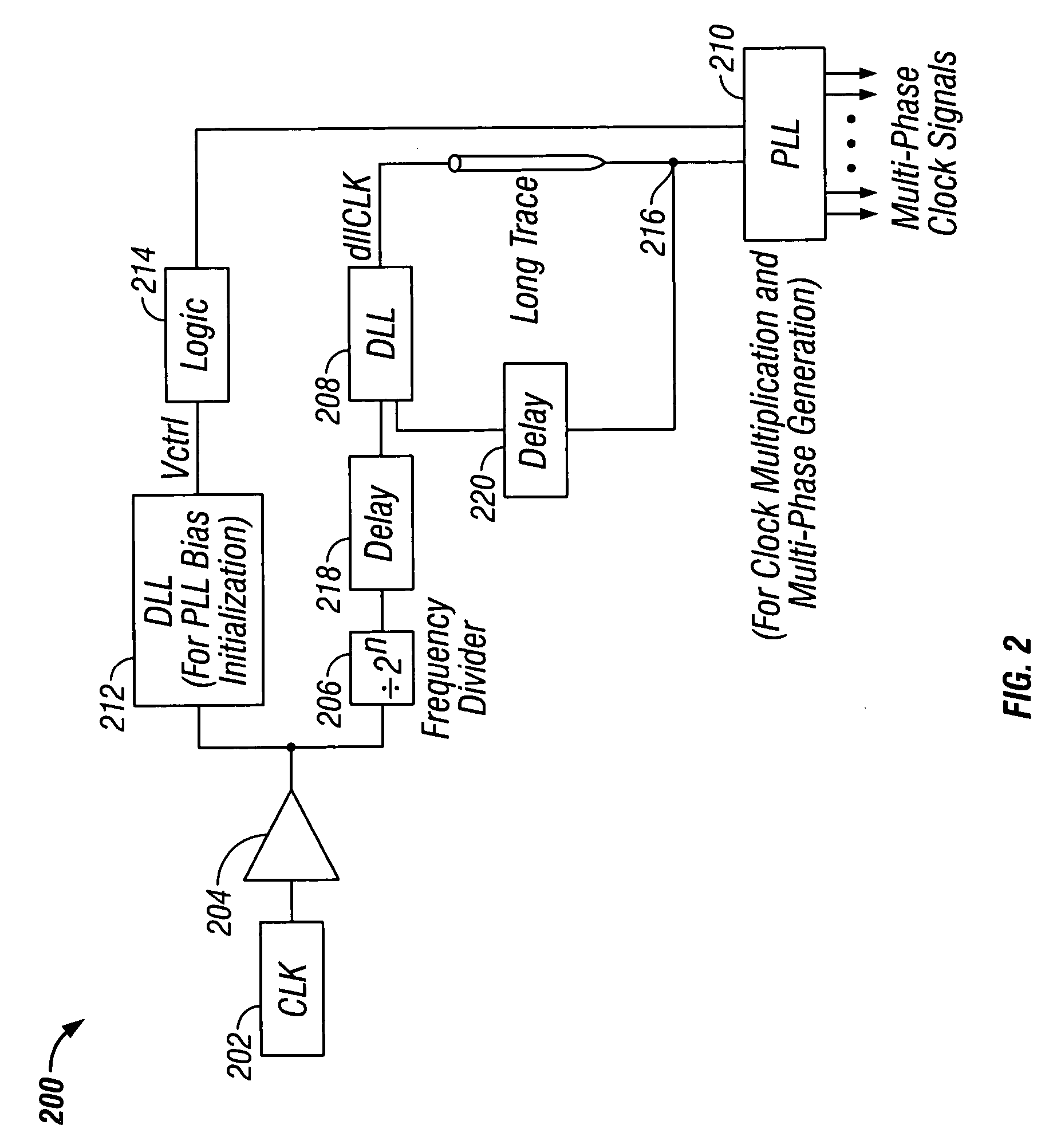Clock signal distribution with reduced parasitic loading effects
a clock signal and parasitic loading technology, applied in the direction of generating/distributing signals, pulse automatic control, electrical equipment, etc., can solve the problems of power loss and effect, load effect, jitter, etc., and achieve the effect of reducing parasitic loading
- Summary
- Abstract
- Description
- Claims
- Application Information
AI Technical Summary
Benefits of technology
Problems solved by technology
Method used
Image
Examples
Embodiment Construction
[0014] The invention is directed to reducing parasitic loading effects in clock signal distribution systems.
[0015]FIG. 1 shows a clock signal distribution system 100 in accordance with the invention. System 100 includes clock generator 102, buffer 104, frequency divider 106, delay-locked loop (DLL) 108 and phase-locked loop (PLL) 110. Clock generator 102 outputs a reference clock signal having a first frequency (fref) to buffer 104. Frequency divider 106 receives the reference clock signal from buffer 104, and outputs to DLL 108 a second clock signal having a frequency (f2) that is equal to the reference clock frequency divided by 2n (i.e., f2=fref / 2n) for all positive integers n. DLL 108“locks” to the second clock signal and outputs at output 112 a third clock signal preferably having the same frequency (f2) as the second clock signal. Other frequencies may of course be provided by DLL 108. “Locking” by DLL and PLL circuits is described in greater detail below in connection with F...
PUM
 Login to View More
Login to View More Abstract
Description
Claims
Application Information
 Login to View More
Login to View More - R&D
- Intellectual Property
- Life Sciences
- Materials
- Tech Scout
- Unparalleled Data Quality
- Higher Quality Content
- 60% Fewer Hallucinations
Browse by: Latest US Patents, China's latest patents, Technical Efficacy Thesaurus, Application Domain, Technology Topic, Popular Technical Reports.
© 2025 PatSnap. All rights reserved.Legal|Privacy policy|Modern Slavery Act Transparency Statement|Sitemap|About US| Contact US: help@patsnap.com



